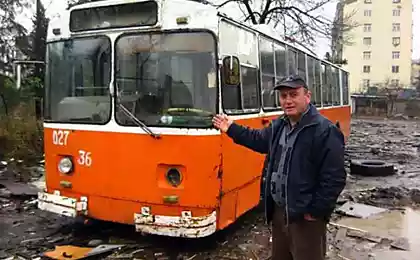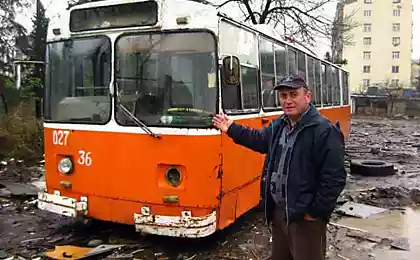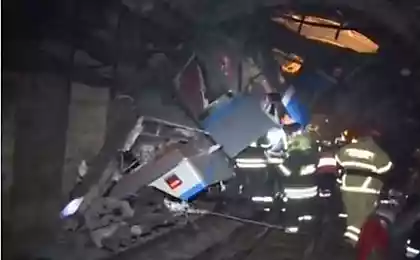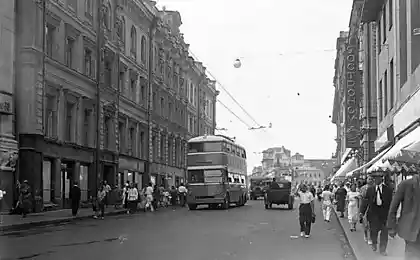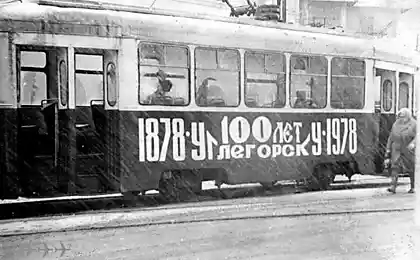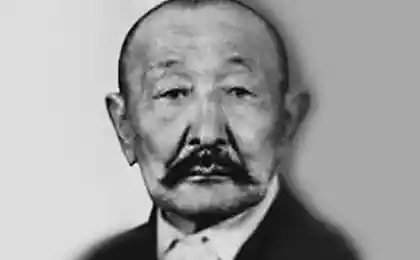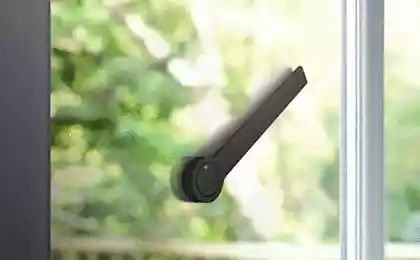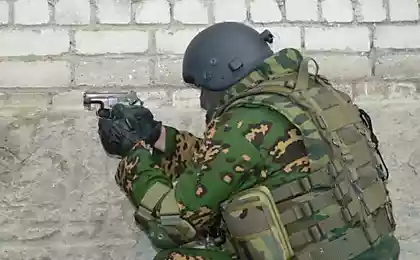652
Trolleybus arrow and other special units of the COP
They asked me today device trolley arrows. Decided gash informative (especially for motorists!) Post of the special units of the contact network.
Will 6 photos + text
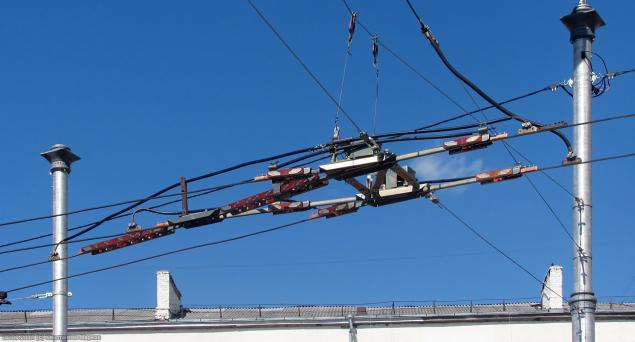
In the cities of the former USSR (and the other countries where the trolley was built by the Soviet school)
used to control automatic arrows "current».
The principle is the arrow:
If the trolley is necessary to follow the right, the driver runs with the arrow off the power circuit (ie, coasting) This arrow flows through the coil current is small, the feathers of the arrow are in the initial position.
When the driver turning left must take an arrow with enabled power circuit (ie, running down the pedal). This creates an electric circuit: the contact wire (positive) - coil left arrow - left bar - resistance - the right rod - coil right arrow - contact wire (negative). This triggered two electromagnetic coils and translate the feathers of the arrow to the left direction. After some time (typically 1-2 seconds) are discarded feathers back to the right.
Sometimes there are arrows where on the contrary - the standard position "left", and for the passage of the right to press the pedal chassis.
In modern trolleybuses often instead of a pedal, you can use a special button.
Naturally, in order to have time to jump to the feathers and shoes normally included in bends structures such arrows trolley runs at a speed of about 15-20 (and if razёbanaya arrow - and then 5) km / h. So, dear motorists if a trolley in front of you for no apparent reason on an empty road slowed down, and then he began to accelerate - it's not because the carrier fag, but because he took an arrow).
Oh yeah, and the right direction is de-energized, to avoid short-circuiting wires crossed. So if a trolley stops when the bar will be located on an isolated area (usually the length of a meter and a half or two on the right to hold the arrow) - that it will only push.
In Europe, the arrows are set slightly different type. They can take place at a speed of 20-40km / h and they are switched by means of radio control installed in the cockpit of each trolley
To connect the two lines is used such a structure, but without coils and moving parts - just by using a specially shaped slats shoes sent on the wire
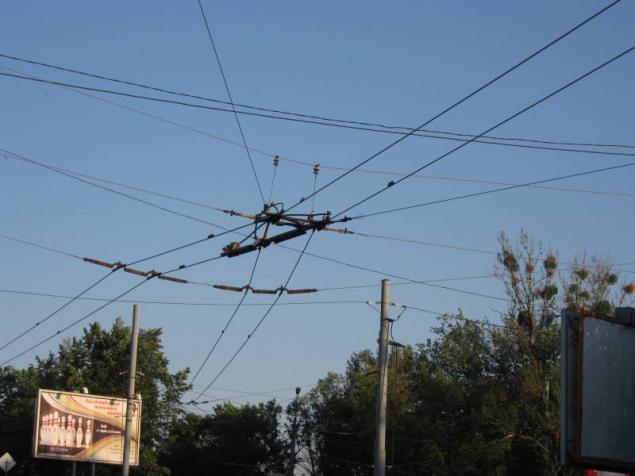
For the intersection of the lines using special intersection. Usually all directions there are de-energized. In one intersection may intersect two or three lines. The rate of passage of the intersection of no more than 15-20 km / h (depending on the degree of razёbanosti)
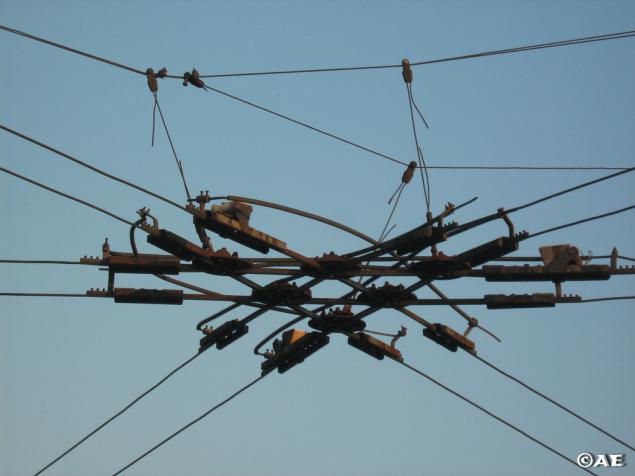
If the trolleybus stop at the intersection of passage - one way out
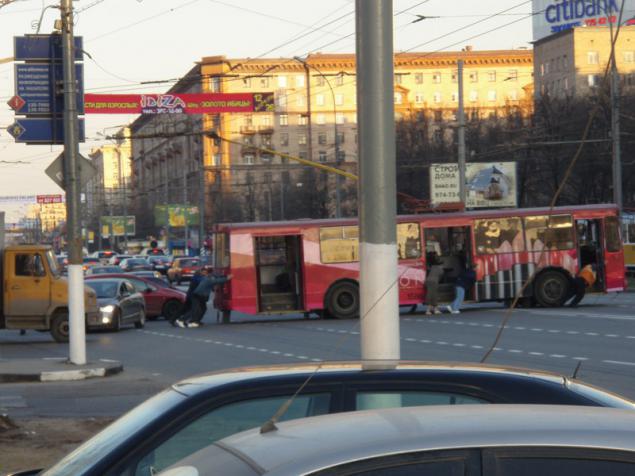
For sectioning off the line and the possibility of individual sections Sectional sealants used. They also pass coasting, since they are de-energized (length about 50cm)
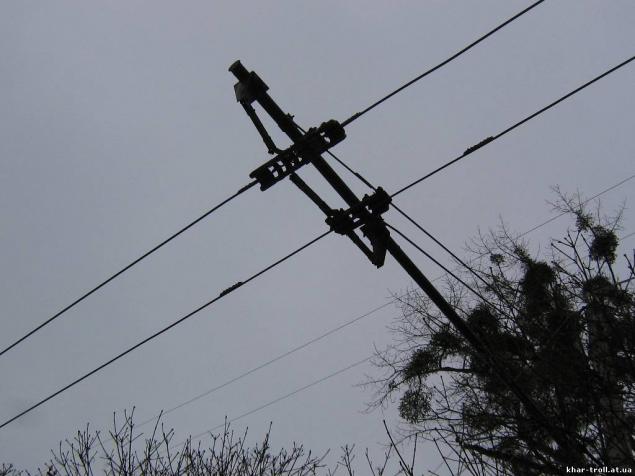
And finally the last. The maximum distance that the trolley may deviate from the wires - a 4.5 meter from the wire to the side. With this rejection of the maximum speed often around 5-10km / h, otherwise you can and wire break.
Keep this in mind when parking, if you do not want to get yourself on lobovinu couple of meters of cable as thick as two fingers, and even energized 600V
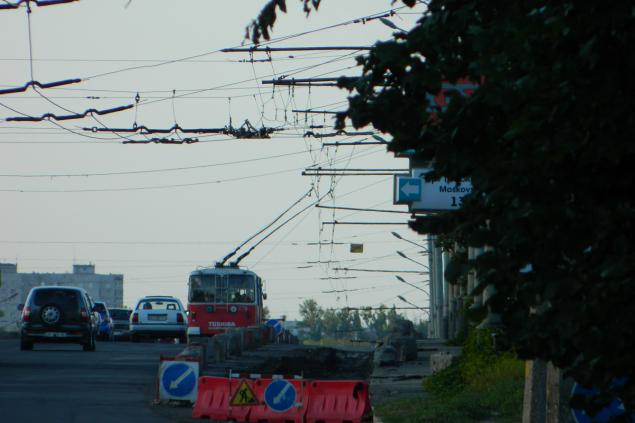
Source:
Will 6 photos + text

In the cities of the former USSR (and the other countries where the trolley was built by the Soviet school)
used to control automatic arrows "current».
The principle is the arrow:
If the trolley is necessary to follow the right, the driver runs with the arrow off the power circuit (ie, coasting) This arrow flows through the coil current is small, the feathers of the arrow are in the initial position.
When the driver turning left must take an arrow with enabled power circuit (ie, running down the pedal). This creates an electric circuit: the contact wire (positive) - coil left arrow - left bar - resistance - the right rod - coil right arrow - contact wire (negative). This triggered two electromagnetic coils and translate the feathers of the arrow to the left direction. After some time (typically 1-2 seconds) are discarded feathers back to the right.
Sometimes there are arrows where on the contrary - the standard position "left", and for the passage of the right to press the pedal chassis.
In modern trolleybuses often instead of a pedal, you can use a special button.
Naturally, in order to have time to jump to the feathers and shoes normally included in bends structures such arrows trolley runs at a speed of about 15-20 (and if razёbanaya arrow - and then 5) km / h. So, dear motorists if a trolley in front of you for no apparent reason on an empty road slowed down, and then he began to accelerate - it's not because the carrier fag, but because he took an arrow).
Oh yeah, and the right direction is de-energized, to avoid short-circuiting wires crossed. So if a trolley stops when the bar will be located on an isolated area (usually the length of a meter and a half or two on the right to hold the arrow) - that it will only push.
In Europe, the arrows are set slightly different type. They can take place at a speed of 20-40km / h and they are switched by means of radio control installed in the cockpit of each trolley
To connect the two lines is used such a structure, but without coils and moving parts - just by using a specially shaped slats shoes sent on the wire

For the intersection of the lines using special intersection. Usually all directions there are de-energized. In one intersection may intersect two or three lines. The rate of passage of the intersection of no more than 15-20 km / h (depending on the degree of razёbanosti)

If the trolleybus stop at the intersection of passage - one way out

For sectioning off the line and the possibility of individual sections Sectional sealants used. They also pass coasting, since they are de-energized (length about 50cm)

And finally the last. The maximum distance that the trolley may deviate from the wires - a 4.5 meter from the wire to the side. With this rejection of the maximum speed often around 5-10km / h, otherwise you can and wire break.
Keep this in mind when parking, if you do not want to get yourself on lobovinu couple of meters of cable as thick as two fingers, and even energized 600V

Source:

